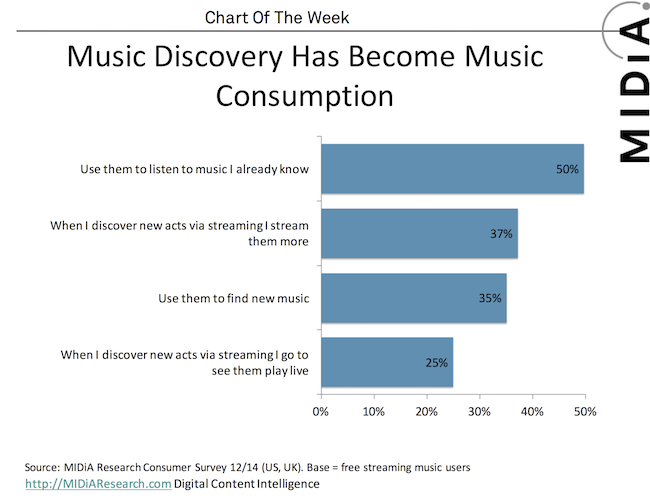Having a substantial and dedicated following is a massive asset when it comes to building revenue and effectively using social media, but guiding fans to your work and achieving a critical mass is no easy task, and one many do incorrectly.
________________________________
Guest Post by Bas Grasmayer, from the MUSIC x TECH x FUTURE weekly mailing
Having a large fanbase or userbase opens up a lot of opportunities. You can experiment with monetization, referrals, and you won’t feel like you’re speaking to an empty room when using social media channels. Before getting there, you must get people to discover you and it’s this crucial first step where a mentality problem leads to many great musicians and startups never really taking off.
An impression is not enough
You have a “killer app”. Or you make insanely good music. Surely, upon seeing or hearing it, people will instantly fall in love and become your fan. Not quite.
We live in a noisy age and people will quite simply not be paying enough attention the first time. If you want to convince someone to change their habit and use your service, you’ll often need more than 1 impression. Don’t think you’re excluded as a label or musician: most people prefer listening to music they already know, so they have to make you part of their habit.

The Rule of Seven
In marketing, there’s a general rule of thumb that people need to hear your message seven times before most will make a purchase decision. Seven is soft and it varies from business to business, so it might be five or twelve, but the most important takeaway is:
You’re probably not going to stand out on the first impression.
This means you have to adjust your strategy. The goal is to get heard or seen by a relevant audience multiple times and to then connect them to your channels or service, so that it’s easy to get their attention again and monetize them.
The Rule of Seven for Music
I follow the fanbase as an ecosystem model by default and will be using that now. It means you connect your fanbase, play a central role in it, understand who the people are, and develop new business models and revenue streams with them (it can be as simple as just asking). It goes:
- Be discovered
- Retain attention
- Connect (with) fans
- Nurture the connection
- Listen (and build business models)
So to master step 1 and 2, assume you need to be heard seven times before people really start to care.
Step 1: make really good music and lots of it.
Step 2: understand who your listeners are and whether there’s a ‘scene’ (can be an internet scene, too).
Step 3: identify the main channels & curators where those listeners go. Try to get in touch with these playlist curators or YouTube / Soundcloud channels (or blogs) and try to get your music on there.
Step 4: ALWAYS add proper metadata to songs so people can easily identify you.
Step 5: ALWAYS be guiding people to your OWN channels. Whether that’s newsletters, social networks, music services, whatever, you need to get people to places where you can get in touch with them again. Give people a choice: not everyone wants emails, some people prefer social network X over Y, etc. Don’t give too much choice: keep it manageable for yourself.
Step 6: keep going. Results are going to be coming in slow and unpredictably, before it steadies out. You don’t want to leave people hanging on the fifth impression… Keep going.
Step 7: learn, network and spread. Every scene has its own ways of reaching new listeners and leveraging other people’s audience. In hiphop and dance music, it often comes through collaborations and mixtapes. Where hiphop has freestyle sessions on (online) radio channels, dance music has DJ slots. Talk to people, work on your skills, produce quality and NETWORK.
Networking is an important and underestimated skill in music. It might not be hard to get your music heard, but it’s much harder to get your music heard seven times by the same person. Curators, club owners, radio programmers, YouTubers, game streamers, bloggers, Twitterati, videographers, and other artists can all help you do this, so you need to get good at building valuable connections.
Be consistent, be everywhere where your audience is, and stay persistent.
Hat tip to Jesse Dijksman of Dutch crowdfunding subscription platform Lukida, who keeps repeating this rule to makers who are part of Lukida.